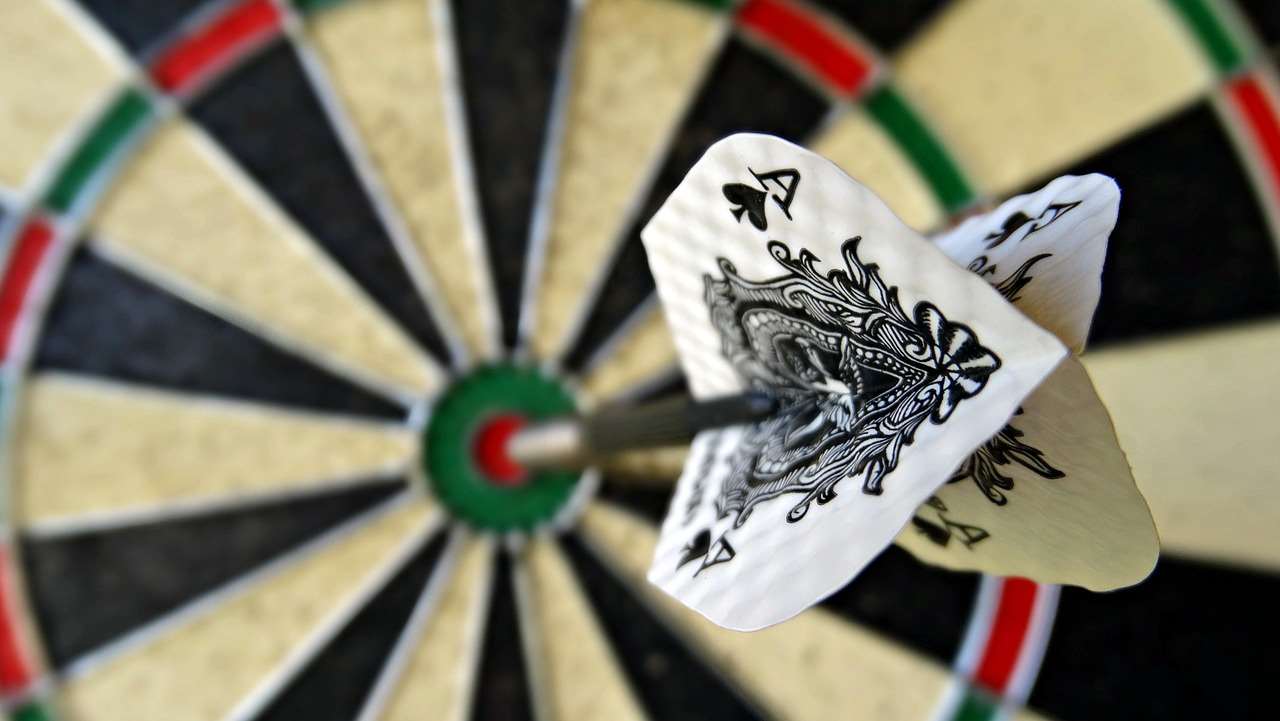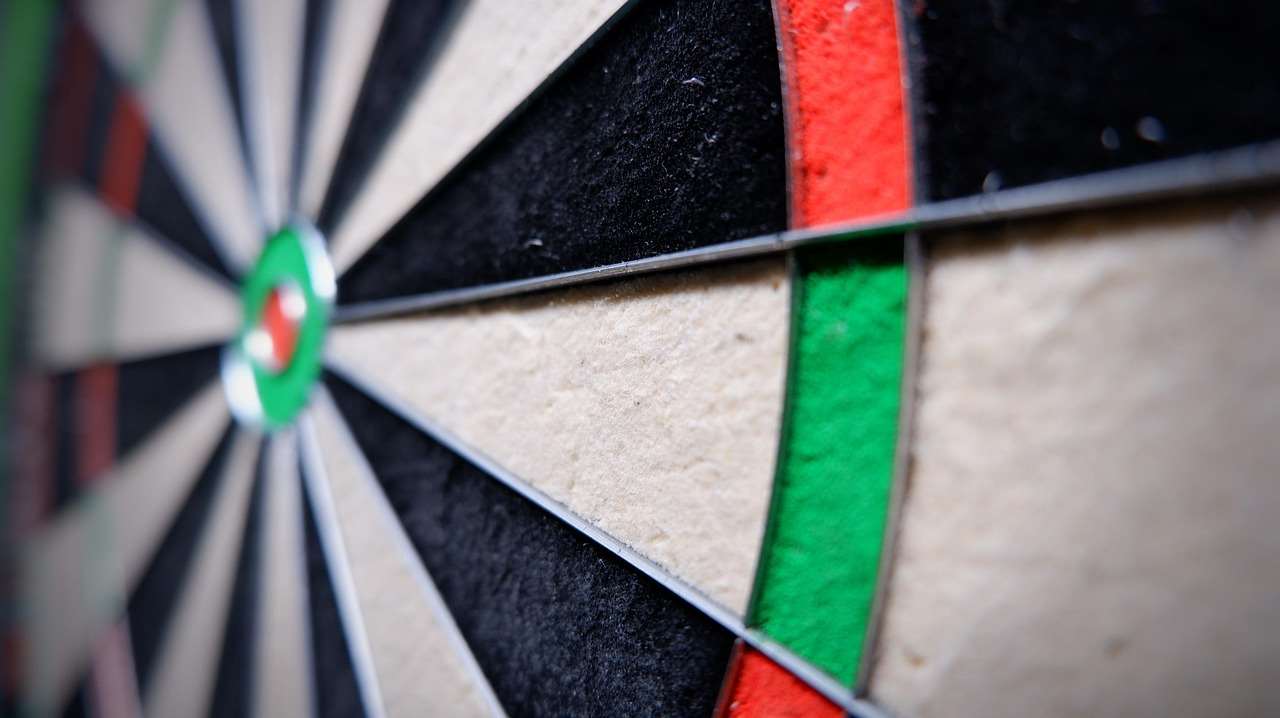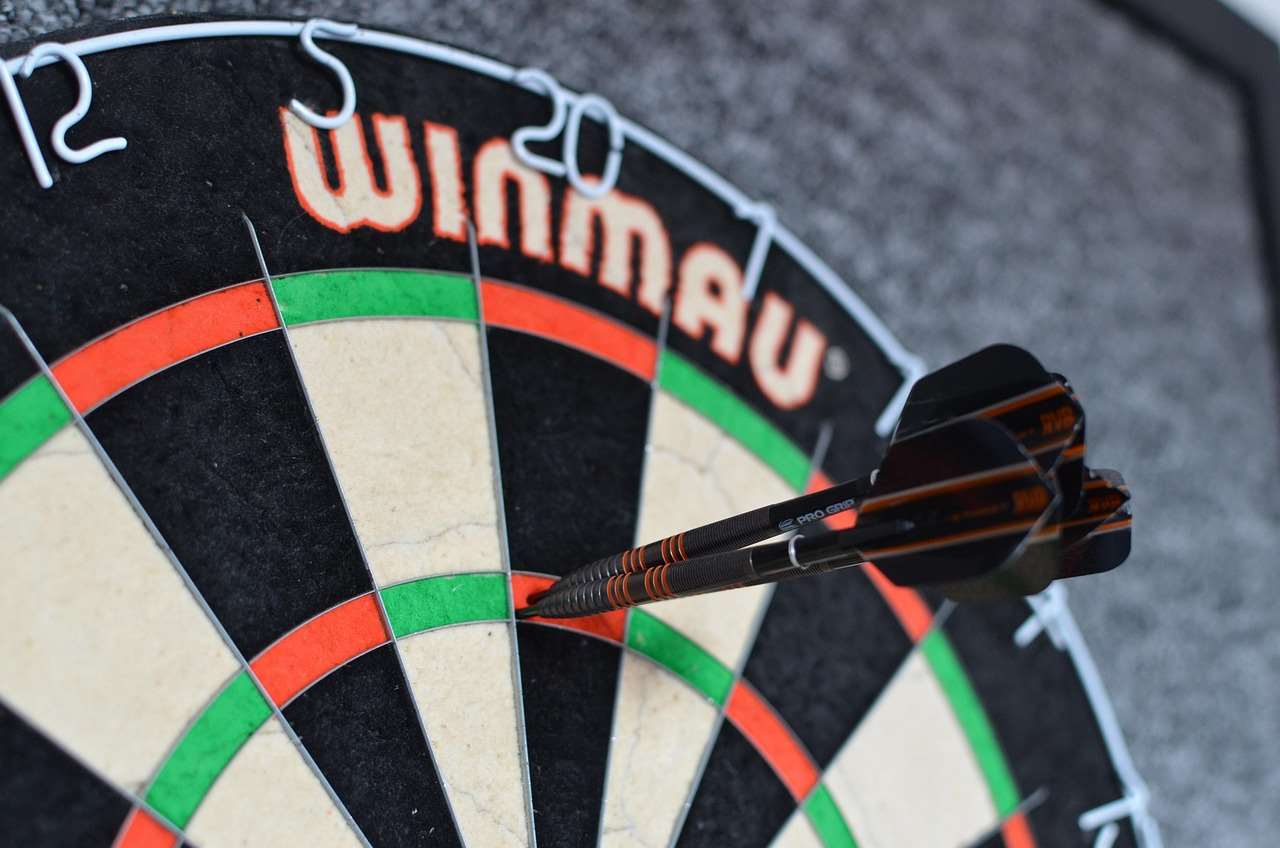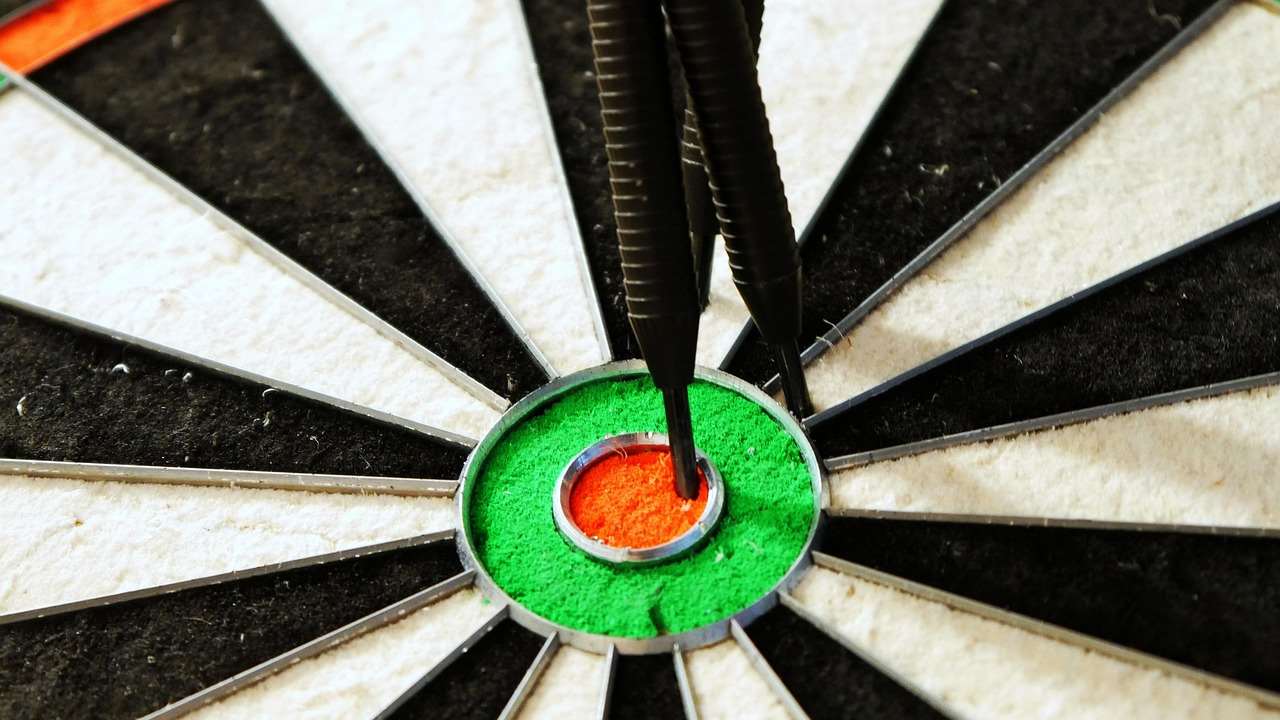The target for darts, a seemingly simple circle, is the heart of the game; mastering its intricacies – from bullseye placement to segment strategies – is the key to becoming a proficient player. This article explores everything you need to know about dartboards, including regulations, scoring, setup, and choosing the right one for your needs.
⚠️ Still Using Pen & Paper (or a Chalkboard)?! ⚠️
Step into the future! The Dart Counter App handles all the scoring, suggests checkouts, and tracks your stats automatically. It's easier than you think!
Try the Smart Dart Counter App FREE!Ready for an upgrade? Click above!
Understanding the Anatomy of Your Target for Darts
The dartboard, officially known as a ‘dartboard,’ isn’t just a random collection of colors and numbers. It’s a precisely designed system that demands accuracy and skill. Understanding the various sections is crucial for strategic gameplay.
The Standard Dartboard Layout
A standard dartboard is typically made of sisal fibers tightly packed together. Key sections include:
- Bullseye: The small circle in the center. The outer bullseye is worth 25 points, while the inner bullseye (also known as the double bull or “double”) is worth 50 points.
- Doubles Ring: The outer ring of the board. Darts landing in this ring score double the value of the corresponding number.
- Triples Ring: The inner ring, halfway between the bullseye and the doubles ring. Darts landing here score triple the value of the corresponding number.
- Single Number Segments: The large areas between the rings, representing the numbers 1 through 20.
- Wire Spider: The thin wires that separate the segments. A dart landing on the wire does not score.
- Oche: This isn’t *on* the board, but crucial. This is the throwing line, usually 7′ 9 1/4″ (2.37 meters) from the face of the dartboard.
Standard Dartboard Dimensions and Specifications
Official dartboard dimensions are strictly regulated for tournament play. Here’s what you need to know:
- Diameter: 17 3/4 inches (451 mm)
- Thickness: Typically around 1 1/2 inches (38 mm)
- Bullseye Height: The center of the bullseye must be 5 feet 8 inches (1.73 meters) from the floor.

Choosing the Right Target for Darts: Different Types of Dartboards
While the standard sisal dartboard is the most common, there are different types of dartboards to consider, each with its own advantages and disadvantages.
Sisal Dartboards: The Professional’s Choice
Sisal dartboards are the preferred choice for serious players due to their durability and self-healing properties. When a dart is removed, the sisal fibers naturally close up, extending the board’s lifespan. Look for high-quality sisal and a thin wire spider to minimize bounce-outs. This type of board greatly assists with darts scoring how.
Electronic Dartboards: Convenience and Technology
Electronic dartboards are popular for home use, especially for casual players. They feature plastic segments with small holes, and darts with plastic tips are used. The board automatically calculates the score, making it ideal for beginners or for playing with friends who may not be familiar with the rules. Some even offer a Electronic dart score counter and various game options. However, they are generally less durable than sisal boards.
Magnetic Dartboards: Safety First
Magnetic dartboards are a safe option for children or for environments where safety is a primary concern. They use magnetic darts that stick to a metal surface. While they don’t offer the same level of realism as sisal boards, they provide a fun and safe way to enjoy the game.
Setting Up Your Target for Darts: Mounting and Illumination
Proper setup is essential for an enjoyable and fair game of darts. This includes mounting the board at the correct height and ensuring adequate lighting.
Mounting Your Dartboard Correctly
Follow these steps to mount your dartboard:
- Measure the Height: Ensure the bullseye is 5 feet 8 inches (1.73 meters) from the floor.
- Secure the Mounting Bracket: Most dartboards come with a mounting bracket. Attach it securely to the wall, making sure it’s level.
- Hang the Dartboard: Hang the dartboard on the mounting bracket.
- Measure the Oche: The oche (throwing line) should be 7 feet 9 1/4 inches (2.37 meters) from the face of the dartboard. Use a measuring tape to ensure accuracy.
Proper Lighting for Your Dartboard
Good lighting is crucial for visibility and accuracy. Here are some lighting options:
- Dartboard Surround with Integrated Lighting: These surrounds provide even illumination around the entire board.
- Overhead Lighting: A bright overhead light can also work, but make sure it doesn’t cast shadows on the board.
- Side Lighting: Adjustable side lights can be positioned to eliminate shadows and provide optimal visibility.

Mastering the Target for Darts: Throwing Techniques and Strategies
Improving your dart game requires practice and a good understanding of throwing techniques and strategies. Whether you’re aiming for darts point bulls league perfection or just enjoying a casual game, these tips will help.
Proper Stance and Grip
Your stance and grip are fundamental to your throwing accuracy.
- Stance: Stand with one foot (usually your dominant foot) slightly forward, facing the dartboard. Maintain a comfortable and balanced posture.
- Grip: Experiment with different grips to find what feels most comfortable and secure. Avoid gripping the dart too tightly. A consistent grip is key.
The Throwing Motion: Consistency is Key
A smooth and consistent throwing motion is essential for accuracy.
- Arm Movement: Keep your upper arm still and use your forearm to generate the throwing motion.
- Release Point: Release the dart at the same point in each throw.
- Follow-Through: Follow through with your arm after releasing the dart.
Strategic Aiming: Maximizing Your Score
Knowing where to aim is just as important as how to throw. Consider these strategies:
- 20s: The 20 segment is the highest-scoring single segment. Aim for the triple 20 to maximize your score.
- 19s: If you miss the triple 20, the triple 19 is a good backup option, as it’s next highest triple number.
- Bullseye: Aim for the bullseye when you need a specific score to finish a game.
- Doubles: Finishing on a double is a standard rule in many dart games. Practice hitting doubles to improve your finishing ability.

Dart Care and Maintenance: Keeping Your Darts in Top Condition
Taking care of your darts will ensure they perform their best and last longer. Regular maintenance is essential for optimal performance; don’t forget to explore darts stems and other accessories.
Cleaning Your Darts
Clean your darts regularly to remove dirt and grime. Use a soft cloth and mild soap to wipe down the barrels. Avoid using harsh chemicals or abrasive cleaners.
Sharpening Your Steel Tip Darts
Sharp tips are essential for preventing bounce-outs. Use a dart sharpener to keep your steel tips sharp. Be careful not to over-sharpen them, as this can damage the board.
Replacing Broken or Damaged Parts
Inspect your darts regularly for any signs of damage. Replace broken flights, bent stems, or damaged points as needed. Replacing worn parts will maintain the balance and accuracy of your darts.

Common Dart Games and Rules
There are many different dart games you can play, each with its own unique set of rules. Here are a few of the most popular:
501: The Classic Game
501 is the most common dart game. Each player starts with 501 points and must reduce their score to zero. The game is typically finished on a double. Mastering darts scoring how is essential for success in 501.
Cricket: A Strategic Game
Cricket is a strategic game that involves scoring points on specific numbers (20, 19, 18, 17, 16, 15, and the bullseye). Players must “close” these numbers by hitting them three times before their opponent does. Once a number is closed, only that player can score on it.
Around the Clock: A Practice Game
Around the Clock is a simple practice game that involves hitting each number on the dartboard in sequence, from 1 to 20. This game is great for improving your accuracy and consistency. You might even find some darts stretches helpful before beginning.
Advanced Tips and Techniques for the Target for Darts
Once you’ve mastered the basics, you can start exploring more advanced tips and techniques to further improve your dart game.
Mental Game: Focus and Concentration
The mental game is just as important as the physical game. Stay focused, concentrate on your target, and avoid distractions. Visualize your throws and maintain a positive attitude. If you want darts tips today, remember to stay calm.
Analyzing Your Performance
Keep track of your scores and analyze your performance to identify areas for improvement. Pay attention to which numbers you’re hitting consistently and which ones you’re struggling with. Adjust your practice routine accordingly.

Experimenting with Different Darts and Equipment
Experiment with different types of darts, flights, and stems to find what works best for you. Small changes in your equipment can have a significant impact on your performance.
Conclusion: Hitting Your Target for Darts
Understanding the target for darts, mastering throwing techniques, and choosing the right equipment are all essential for becoming a skilled darts player. Whether you’re a beginner or an experienced player, the key is consistent practice and a passion for the game. Now that you have a solid foundation, grab your darts, find your darts point bulls league and start practicing. So, step up to the oche and aim for that bullseye!
Hi, I’m Dieter, and I created Dartcounter (Dartcounterapp.com). My motivation wasn’t being a darts expert – quite the opposite! When I first started playing, I loved the game but found keeping accurate scores and tracking stats difficult and distracting.
I figured I couldn’t be the only one struggling with this. So, I decided to build a solution: an easy-to-use application that everyone, no matter their experience level, could use to manage scoring effortlessly.
My goal for Dartcounter was simple: let the app handle the numbers – the scoring, the averages, the stats, even checkout suggestions – so players could focus purely on their throw and enjoying the game. It began as a way to solve my own beginner’s problem, and I’m thrilled it has grown into a helpful tool for the wider darts community.